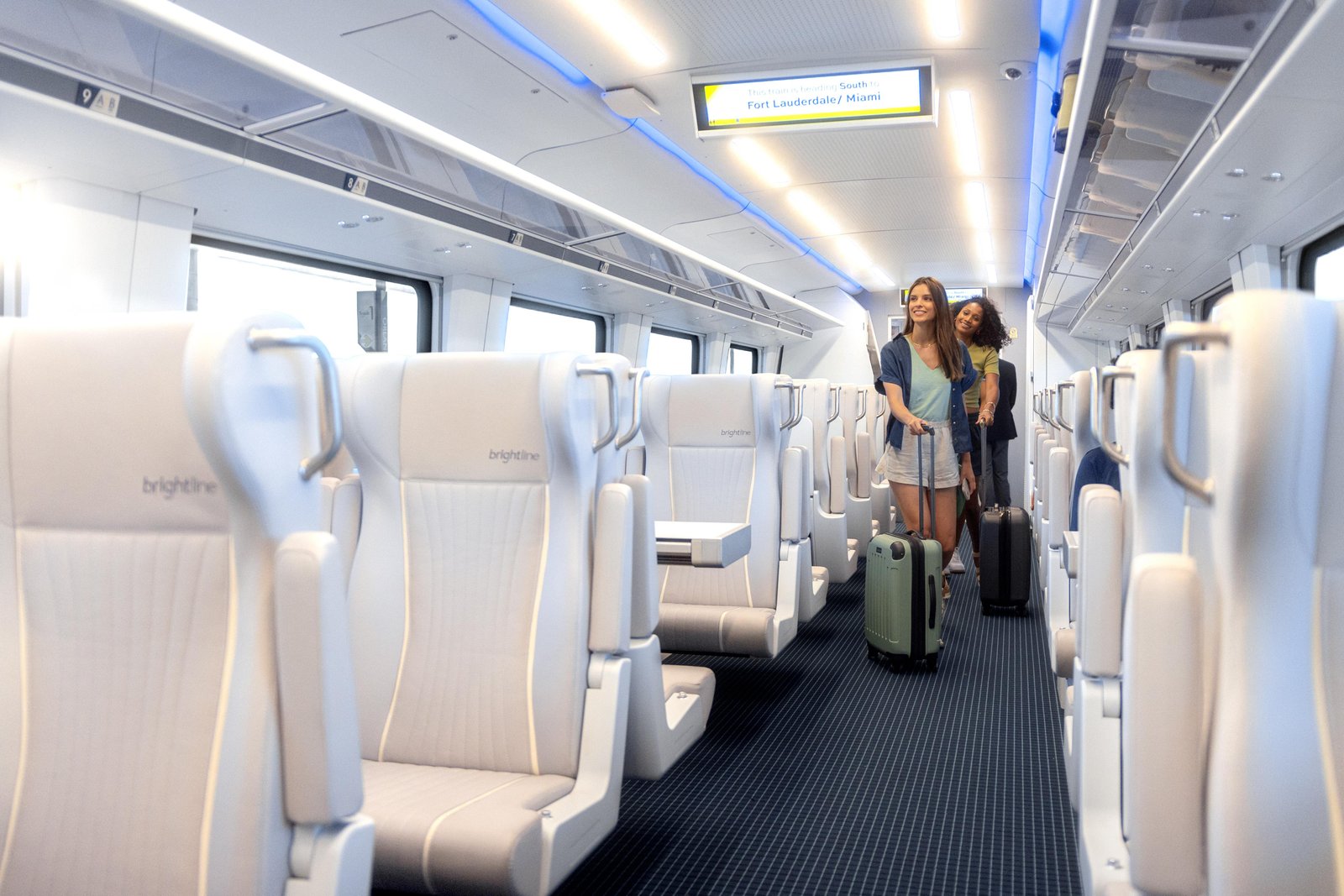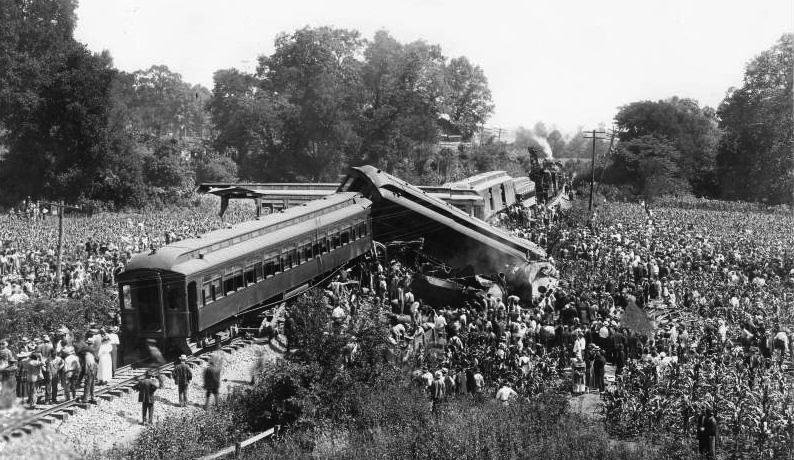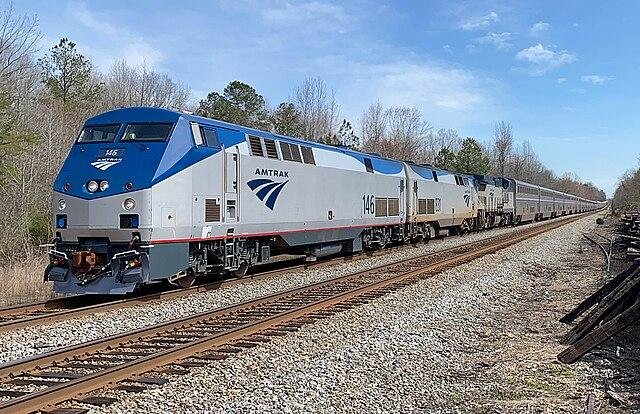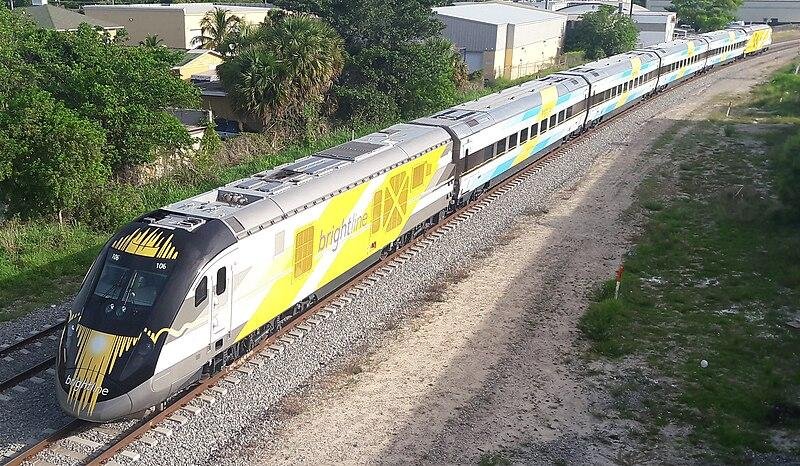In the ever-bustling landscape of Brevard County, where the promise of progress meets the pulse of daily life, a startling incident unfolded that momentarily disrupted the routine hum of train and road. On a sunny afternoon near the intersection of East NASA Boulevard and Hickory Street, the sleek, modern Brightline train, a symbol of speed and innovation, collided with a front-end loader—a heavy machinery giant tailored for construction and transformation. This unexpected encounter serves as a stark reminder of the complex dance between man, machine, and infrastructure, raising questions about safety protocols, operational challenges, and the very fibers that weave together our transportation networks. As we delve deeper into the events surrounding this incident, we uncover not just the facts of the crash, but also the wider implications for commuter safety and the relentless march of development in a region defined by its duality of adventure and industry.
Investigation Into the Brightline Train Incident and Its Causes
The investigation into the recent Brightline train incident involving a collision with a front-end loader has garnered significant attention from local authorities and safety experts alike. Initial assessments indicate several potential factors contributing to this unfortunate event. Key elements under scrutiny include:
- Maintenance protocols: Were the vehicles involved appropriately maintained and operational at the time of the crash?
- Operator training: Did the operators of both the Brightline train and the front-end loader possess the necessary training and awareness of their surroundings?
- Signal and signage visibility: Were proper warning signals and signage in place to alert both the train operators and construction crews of potential hazards?
As investigators delve deeper, they are also collecting data on the timing of the incident and the operational conditions of the railway and construction zone. A preliminary analysis reveals that:
| Date and Time | Weather Conditions | Train Speed (mph) |
|---|---|---|
| October 15, 2023 | Clear | 55 |
This information will play a crucial role in determining whether external factors, such as weather or mechanical failure, may have influenced the collision. The ongoing investigation aims to provide clarity and ensure enhanced safety measures for both railway operations and construction activities in the future.

The Impact of Train Collisions on Local Infrastructure and Safety Measures
The recent incident involving a Brightline train colliding with a front-end loader near East NASA Boulevard and Hickory Street raises important considerations about the state of local infrastructure. Such collisions not only inflict significant damage on the vehicles involved but also pose threats to surrounding structures and road safety. This incident highlights the necessity for comprehensive assessments of our rail crossings and associated infrastructure to ensure they can withstand unexpected events. Key factors to consider include:
- Condition of rail infrastructure: Regular maintenance and upgrades to tracks and signals are crucial.
- Safety features at crossings: Enhanced signage, barriers, and lighting can aid in accident prevention.
- Public awareness campaigns: Educating the community about railway safety can increase vigilance around crossings.
Furthermore, local safety measures must evolve in response to incidents like these. Collaborations between municipal authorities, rail companies, and emergency services can foster innovative strategies to mitigate risks. Implementing the following could strengthen safety protocols:
- Regular emergency response drills: These prepare all stakeholders for quick and effective action during train-related emergencies.
- Data collection and analysis: Understanding patterns in train accidents can inform future safety improvements.
- Community engagement: Involving residents in safety discussions can lead to more tailored and effective solutions.

Community Reactions and Concerns Following the East NASA Boulevard Crash
In the wake of the recent incident on East NASA Boulevard, community members have voiced a blend of confusion and concern regarding the interaction between vehicles and the Brightline train. Social media platforms have become a hub for residents to express their thoughts, as many have shared their disbelief about the lack of adequate safety measures at notoriously busy intersections. Key concerns circulating include:
- Insufficient warning signals for motorists and construction vehicles.
- Increased traffic at the intersection due to ongoing construction activities.
- Call for enhanced visibility measures around train tracks.
Local authorities have acknowledged these apprehensions, promising to investigate and enhance safety protocols to prevent future incidents. Residents are particularly worried about the frequency of train-related accidents, prompting discussions on potential solutions. There are suggestions for installation of more pronounced crossing barriers, along with a possible public awareness campaign addressing proper conduct near train tracks. A community meeting is being proposed to further engage residents and gather insights on enhancing safety and preventing future tragedies, reflecting a communal spirit eager to prioritize the wellbeing of all who navigate these increasingly complex intersections.

Recommendations for Enhancing Train and Construction Equipment Safety Protocols
To foster a safer environment for both train operations and construction work, it is imperative to establish stringent safety protocols. Regular training sessions for construction workers and train operators should be conducted to ensure they are fully aware of safety procedures and emergency response actions. Additionally, incorporating real-time communication systems between train conductors and construction crews can significantly reduce the likelihood of accidents. Implementing clear visual signals and signage near railway crossings and construction sites can also enhance awareness and caution. Collaboration between rail companies and construction firms to create integrated safety plans will ensure that both parties operate with a shared understanding of potential hazards.
Furthermore, conducting risk assessments regularly can help to identify any evolving dangers in construction zones near railways. Establishing a reporting mechanism for near-miss incidents can promote a culture of safety and accountability. In addition, using technology such as drone surveillance or sensors could provide real-time monitoring of construction activities adjacent to train tracks. It is also essential to engage in community outreach initiatives to educate the public about the significance of staying alert around train tracks. By taking these measures, we can significantly enhance safety for both trains and construction equipment, ultimately protecting lives.
Q&A
Q&A: Brightline Train Crashes into Front-End Loader Near East NASA Boulevard and Hickory Street
Q: What happened in the incident near East NASA Boulevard and Hickory Street?
A: On the morning of [insert date], a Brightline train collided with a front-end loader at a railway crossing near East NASA Boulevard and Hickory Street. The impact caused significant disruption in the area and raised concerns about safety protocols at the crossing.
Q: Were there any injuries reported as a result of the collision?
A: Fortunately, no serious injuries were reported from the collision. The operator of the front-end loader was able to exit the vehicle safely before the crash. Emergency services arrived promptly at the scene to assess the situation.
Q: What are Brightline trains, and how do they operate?
A: Brightline is a high-speed rail service that operates in Florida, offering intercity travel primarily between Miami, Fort Lauderdale, and West Palm Beach. The trains are designed for efficiency and speed, often traveling at up to 125 miles per hour on certain tracks.
Q: What led to the collision?
A: Preliminary investigations suggest that the front-end loader was in the process of crossing the tracks when the Brightline train approached. While specifics are still under investigation, early reports indicate that the loader may not have seen or heard the train due to surrounding construction noise.
Q: How does this incident affect railway operations?
A: The collision temporarily halted Brightline services in the vicinity, resulting in delays and inconvenience for passengers. Railway authorities are working to clear the scene and investigate the circumstances around the incident before resuming normal operations.
Q: Are there any safety measures in place for rail crossings?
A: Yes, rail crossings are typically equipped with various safety measures, including warning lights, crossing gates, and signage. However, the effectiveness of these measures can vary based on visibility, sound conditions, and human factors. Authorities continuously review and improve safety protocols to mitigate risks at crossings.
Q: What are the next steps following this incident?
A: The National Transportation Safety Board (NTSB) and local law enforcement are conducting thorough investigations to determine the specifics of the incident, including any potential regulatory or operational failures. Expect updates from these investigations in the coming weeks.
Q: What should motorists and pedestrians keep in mind at rail crossings?
A: All individuals should approach rail crossings with caution, adhere to warning signals, and never attempt to cross the tracks when a train is approaching. Staying alert and aware of surroundings is crucial to ensuring safety at railway intersections.
Q: Is there a community response to enhance safety in the area?
A: In light of this incident, local authorities are discussing potential improvements to rail crossing infrastructure and community education efforts regarding railway safety. Public forums may be held to gauge community concerns and explore solutions that prioritize safety for both rail passengers and those working near the tracks.
For further updates on this situation, please stay tuned to local news outlets and official announcements from Brightline and safety authorities.
The Conclusion
the incident involving the Brightline train colliding with a front-end loader near East NASA Boulevard and Hickory Street serves as a crucial reminder of the importance of safety and vigilance in our bustling transportation networks. As investigations unfold, authorities are tasked with uncovering the circumstances that led to this collision, while the community processes the implications of such accidents on their daily lives.
As we reflect on this event, it is imperative to advocate for enhanced safety measures around railroad crossings and to foster a culture of awareness among both operators and pedestrians alike. With ongoing advancements in technology and rail safety protocols, there is hope for a future where such incidents become increasingly rare.
Let this incident not only prompt a thorough investigation but also inspire conversations about how we can collectively work towards safer transit solutions. In a world where speed and convenience often take precedence, it is a collective responsibility to ensure that safety remains at the forefront of our transportation systems.

